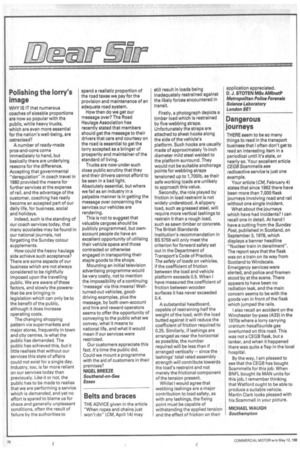Dangerous journeys
Page 72

If you've noticed an error in this article please click here to report it so we can fix it.
THERE seem to be so many things to read in the transport business that I often don't get to read an interesting item in a periodical until it's stale, or nearly so. Your excellent article CEGB Scammells see
radioactive service is just one example.
Your article (CM, February 4) states that since 1962 there have been more than 7,000 flask journeys involving road and rail without one single incident.
What about the journeys which have had incidents? I can recall one in detail. At hand I have a cutting from the Sunday Post, published in Scotland, on September 3, 1978, which displays a banner headline "Nuclear train in derailment". The report says that the flask was on a train on its way from Scotland to Windscale. Emergency services were alerted, and police and firemen stood by at the scene. There appears to have been no radiation leak, and the main concern seems to be with the goods van in front of the flask which jumped the rails.
I also recall an accident on the Winchester by-pass (A33) in the 19705 where a lorry carrying uranium hexaflouride gas overturned on this road. This was not a CEGB flask, but a tanker, and when it happened there was quite a flap in the local hospital.
By the way, I am pleased to see that the CEGB has bought Scammells for this job. When BNFL bought its MAN units for this job, I remember thinking that Watford ought to be able to produce a suitable vehicle. Martin Clark looks pleased with his Scarnmell in your picture.












































































































